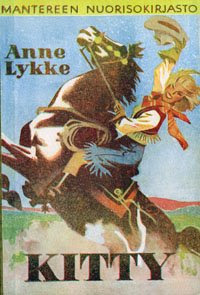 Vastikään ilmestynyt Keikkakuski aloittaa Arktisen Banaanin uuden pokkarisarjan, joka tuo suomalaisten lukijoiden ulottuville parasta uutta kovaksikeitettyä dekkaria Yhdysvalloista ja Englannista.
Vastikään ilmestynyt Keikkakuski aloittaa Arktisen Banaanin uuden pokkarisarjan, joka tuo suomalaisten lukijoiden ulottuville parasta uutta kovaksikeitettyä dekkaria Yhdysvalloista ja Englannista. Keikkakuski on Duane Swierczynskin toinen romaani. Ensimmäinen oli outo paranoidista scifiä ja kovaksikeitettyä dekkaria sekoittava Secret Dead Men, joka ilmestyi PointBlank-kustantamolta vuonna 2005. Keikkakuski eli The Wheelman otti kuitenkin dekkarimaailman ällikällä ilmestyessään keskisuuren St. Martin’s -kustantamon kovakantisena kirjana vielä samana vuonna. Yhdistelmä rajua väkivaltaa ja sysimustaa huumoria puri erityisesti ylipitkiin ja löysiin trillereihin kyllästyneisiin lukijoihin ja tuntui tuovan kovaksikeitetyn lajityypin suoraan 2000-luvulle.
Kysyimme muutamia kysymyksiä kiireiseltä kirjailijalta.
Miten Keikkakuski syntyi?
Kirjoitin sitä huvikseni lukukausien välillä, kun opetin journalismia. En ollut vielä julkaissut mitään, mutta olin jo kirjoittanut Secret Dead Menin, joka oli jäänyt tietokoneen kovalevylle. Halusin kokeilla, onnistuisiko tiukan ja ilkeän rikoskirjan kirjoittaminen, enkä ajatellut, että se johtaisi mihinkään. Halusin yksinkertaisesti vain viihdyttää itseäni.
Keikkakuski on kunnianosoitus Richard Starkin (eli Donald Westlaken) Parker-kirjoille ja ylipäätään koko keikkalajityypille. Miksi keikkakuvaukset kiinnostavat sinua?
En oikeastaan ole keikkalajityypin suuri fani. Täydellisesti ajoitetun keikan suunnittelu ja toteutus ei innosta minua yhtä paljon kuin pieleen menneen keikan jälkiselvittelyt. Sen takia Keikkakuskikin alkaa muutamia sekunteja sen jälkeen, kun keikka on käytännössä jo hoidettu.
Oletko samaa mieltä, että kovaksikeitetty noir-dekkari elää nyt uutta nousukautta? Mistä se johtuu?
Minulla ei ole käsitystäkään. Sanoisin, että täällä USA:ssa pannaan jotain veteen, mutta vastaavia kirjoja on ilmestynyt viime aikoina paljon myös Englannissa ja Suomessakin, joten... Oikeasti olen sitä mieltä, että aina on lukijoita, jotka kaipaavat tällaisia synkkiä tarinoita. Ainoa asia, mikä muuttuu, on se, että kirjoille laitetaan erilaisia nimilappuja muutaman vuoden välein.
Onko sinulla joitain suosikkeja uusien kirjailijoiden joukossa?
Olin muutama kuukausi sitten aivan täpinöissäni Josh Bazellin kirjasta Beat the Reaper. Hän onnistui yhdistämään kaksi todella erilaista lajityyppiä, gangsterieepoksen ja lääkärijännärin, ja tuloksena oli jotain todella outoa, brutaalia ja väkivaltaisen hauskaa. En vieläkään ymmärrä, miten hän sen teki.
Keikkakuski on todella vauhdikas ja väkivaltainen kirja, mutta väkivalta tuntuu todelliselta, koska se sattuu. Miten määrittelisit eron sellaisen väkivallan välillä, joka on olemassa draaman takia, ja sellaisen, joka on pantu mukaan vain sen itsensä vuoksi?
Aina kun kirjoitan väkivaltaisen kohtauksen yritän saada aikaan jonkinlaisen tunteen lukijassa. Joskus haluan saadan heidät itkemään. Joskus hätkähtämään. Joskus nauramaan ja sitten tuntemaan itsensä syylliseksi.
Seuraavaksi sinulta ilmestyy suomeksi The Blonde (keväällä 2010 nimellä Vaaleaverikkö). Millainen kirja se on?
The Blonde on minun femme fatale -romaanini, sellainen jossa kaveri tapaa vääränlaisen naisen baarissa ja hänen elämänsä menee päin helvettiä. Tässä tapauksessa sankari Jack kohtaa naisen, joka sanoo, että jos hänet jätetään kymmeneksikin sekunniksi yksin, hän kuolee. Kenetköhän nainen pakottaa pitämään itselleen seuraa koko yön..?
Olet myös kirjoittanut Cable-, Iron Fist- ja Punisher-sarjakuvia Marvelille. Onko romaaneissasi vaikutteita sarjakuvista?
Ilman muuta. Minua kiehtoo ennen kaikkea laittaa henkilöt äärirajoilleen ja katsoa, miten he reagoivat niissä tilanteissa. Supersankarit kuten Cable ja Iron Fist eivät ole siinä mielessä erilaisia. Joskus minusta tuntuu, että olen kehitellyt juonet kirjoihini kaavalla: kiduta henkilöitäsi niin kauan että he melkein kuolevat.
Muutamia eriskummaisia faktoja Duane Swiercynskistä:
- kirjailijan sukunimi tarkoittaa kuusipuun lähellä asuvaa
- Duane ja hänen veljensä Gregg saivat nimensä Allman Brothers -bändiltä
- Duanen äidin sukunimi lyheni, kun hän meni naimisiin – hänen tyttönimensä oli Wojciechowski
- Duanen esikoispojan nimi Parker on kunnianosoitus Richard Starkin romaaneille
- Puolassa Swierczynskin nimi lausutaan ”Smith”
Kysyimme muutamia kysymyksiä kiireiseltä kirjailijalta.
Miten Keikkakuski syntyi?
Kirjoitin sitä huvikseni lukukausien välillä, kun opetin journalismia. En ollut vielä julkaissut mitään, mutta olin jo kirjoittanut Secret Dead Menin, joka oli jäänyt tietokoneen kovalevylle. Halusin kokeilla, onnistuisiko tiukan ja ilkeän rikoskirjan kirjoittaminen, enkä ajatellut, että se johtaisi mihinkään. Halusin yksinkertaisesti vain viihdyttää itseäni.
Keikkakuski on kunnianosoitus Richard Starkin (eli Donald Westlaken) Parker-kirjoille ja ylipäätään koko keikkalajityypille. Miksi keikkakuvaukset kiinnostavat sinua?
En oikeastaan ole keikkalajityypin suuri fani. Täydellisesti ajoitetun keikan suunnittelu ja toteutus ei innosta minua yhtä paljon kuin pieleen menneen keikan jälkiselvittelyt. Sen takia Keikkakuskikin alkaa muutamia sekunteja sen jälkeen, kun keikka on käytännössä jo hoidettu.
Oletko samaa mieltä, että kovaksikeitetty noir-dekkari elää nyt uutta nousukautta? Mistä se johtuu?
Minulla ei ole käsitystäkään. Sanoisin, että täällä USA:ssa pannaan jotain veteen, mutta vastaavia kirjoja on ilmestynyt viime aikoina paljon myös Englannissa ja Suomessakin, joten... Oikeasti olen sitä mieltä, että aina on lukijoita, jotka kaipaavat tällaisia synkkiä tarinoita. Ainoa asia, mikä muuttuu, on se, että kirjoille laitetaan erilaisia nimilappuja muutaman vuoden välein.
Onko sinulla joitain suosikkeja uusien kirjailijoiden joukossa?
Olin muutama kuukausi sitten aivan täpinöissäni Josh Bazellin kirjasta Beat the Reaper. Hän onnistui yhdistämään kaksi todella erilaista lajityyppiä, gangsterieepoksen ja lääkärijännärin, ja tuloksena oli jotain todella outoa, brutaalia ja väkivaltaisen hauskaa. En vieläkään ymmärrä, miten hän sen teki.
Keikkakuski on todella vauhdikas ja väkivaltainen kirja, mutta väkivalta tuntuu todelliselta, koska se sattuu. Miten määrittelisit eron sellaisen väkivallan välillä, joka on olemassa draaman takia, ja sellaisen, joka on pantu mukaan vain sen itsensä vuoksi?
Aina kun kirjoitan väkivaltaisen kohtauksen yritän saada aikaan jonkinlaisen tunteen lukijassa. Joskus haluan saadan heidät itkemään. Joskus hätkähtämään. Joskus nauramaan ja sitten tuntemaan itsensä syylliseksi.
Seuraavaksi sinulta ilmestyy suomeksi The Blonde (keväällä 2010 nimellä Vaaleaverikkö). Millainen kirja se on?
The Blonde on minun femme fatale -romaanini, sellainen jossa kaveri tapaa vääränlaisen naisen baarissa ja hänen elämänsä menee päin helvettiä. Tässä tapauksessa sankari Jack kohtaa naisen, joka sanoo, että jos hänet jätetään kymmeneksikin sekunniksi yksin, hän kuolee. Kenetköhän nainen pakottaa pitämään itselleen seuraa koko yön..?
Olet myös kirjoittanut Cable-, Iron Fist- ja Punisher-sarjakuvia Marvelille. Onko romaaneissasi vaikutteita sarjakuvista?
Ilman muuta. Minua kiehtoo ennen kaikkea laittaa henkilöt äärirajoilleen ja katsoa, miten he reagoivat niissä tilanteissa. Supersankarit kuten Cable ja Iron Fist eivät ole siinä mielessä erilaisia. Joskus minusta tuntuu, että olen kehitellyt juonet kirjoihini kaavalla: kiduta henkilöitäsi niin kauan että he melkein kuolevat.
Muutamia eriskummaisia faktoja Duane Swiercynskistä:
- kirjailijan sukunimi tarkoittaa kuusipuun lähellä asuvaa
- Duane ja hänen veljensä Gregg saivat nimensä Allman Brothers -bändiltä
- Duanen äidin sukunimi lyheni, kun hän meni naimisiin – hänen tyttönimensä oli Wojciechowski
- Duanen esikoispojan nimi Parker on kunnianosoitus Richard Starkin romaaneille
- Puolassa Swierczynskin nimi lausutaan ”Smith”





















